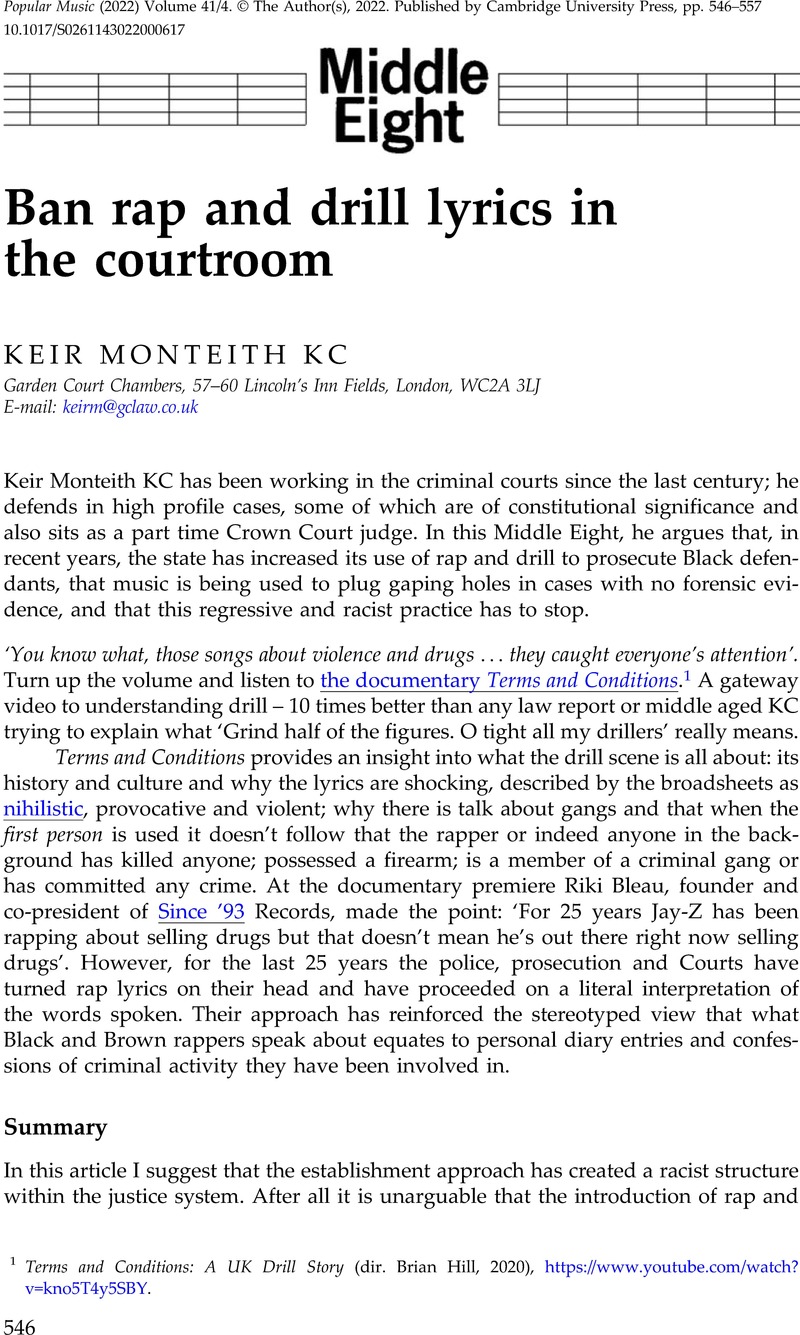Crossref Citations
This article has been cited by the following publications. This list is generated based on data provided by Crossref.
Quinn, Eithne
2024.
Racist inferences and flawed data: drill rap lyrics as criminal evidence in group prosecutions.
Race & Class,
Vol. 65,
Issue. 4,
p.
3.
Young, Tara
and
Hulley, Susie
2024.
‘It’s tantalising evidence . . . . but you’ve got to look at the wider picture’: Rap music as evidence in joint enterprise cases.
Crime, Media, Culture: An International Journal,
Bock, Katharina
2024.
Gangsta-Rap als soziales Spiel.
Zeitschrift für Soziologie,
Vol. 53,
Issue. 3,
p.
281.
Bock, Katharina
2024.
Ästhetische Praktiken im Kontext von Gangsta-Rap.
MedienPädagogik: Zeitschrift für Theorie und Praxis der Medienbildung,
p.
473.




